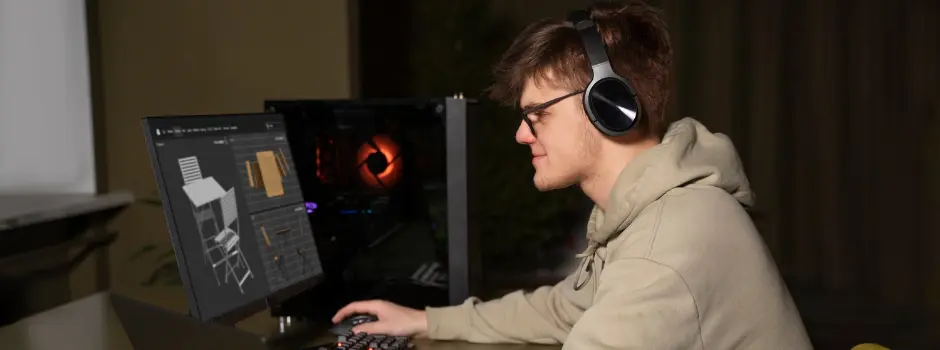
Top 13 (VFX) Visual Effects Careers: An In-Depth Guide
Mar 08, 2025 6 Min Read 2318 Views
(Last Updated)
Visual Effects (VFX) integrates creativity and cutting-edge technology to produce stunning visuals that captivate audiences in movies, games, commercials, and virtual reality experiences. This evolution has made VFX artists some of the most valuable professionals in entertainment. Your experience to become a successful VFX artist needs careful planning.
The advent of real-time rendering, AI-driven effects, and virtual production has revolutionized this field, providing immense opportunities for skilled artists and technical specialists. But what opportunities are there, what they offer and what must you know to bag them? How do you build a successful visual effects career?
These are just a few of the questions that I will be answering in this comprehensive guide which has been crafted after thorough research, let’s begin.
Table of contents
- What is a Visual Effects Career?
- Key Components of VFX:
- All the Visual Effects Careers
- VFX Artist
- Compositor
- 3D Modeler
- FX Artist
- Lighting Artist
- Matte Painter
- Motion Capture Artist
- Roto Artist
- VFX Supervisor
- Virtual Production Artist
- Game VFX Artist
- AR/VR Specialist
- Animation Director
- Industries Employing VFX Professionals:
- Skills Required for a VFX Career
- Technical Skills
- Artistic Skills
- Soft Skills
- Emerging Trends in VFX
- Real-Time Rendering
- Artificial Intelligence in VFX
- Virtual Production
- Procedural Workflows
- Expansion of AR/VR VFX
- Takeaways…
- FAQs
- Is VFX a good career?
- Do VFX artists get paid well?
- What is the scope of a VFX career?
- Is VFX in high demand?
- Does CGI come under VFX?
What is a Visual Effects Career?
A Visual Effects career involves crafting digital imagery to create illusions or enhance live-action footage. VFX professionals work on everything from subtle atmospheric effects to massive computer-generated battles. They collaborate with directors, cinematographers, and editors to ensure the final visuals align with the narrative.
Key Components of VFX:
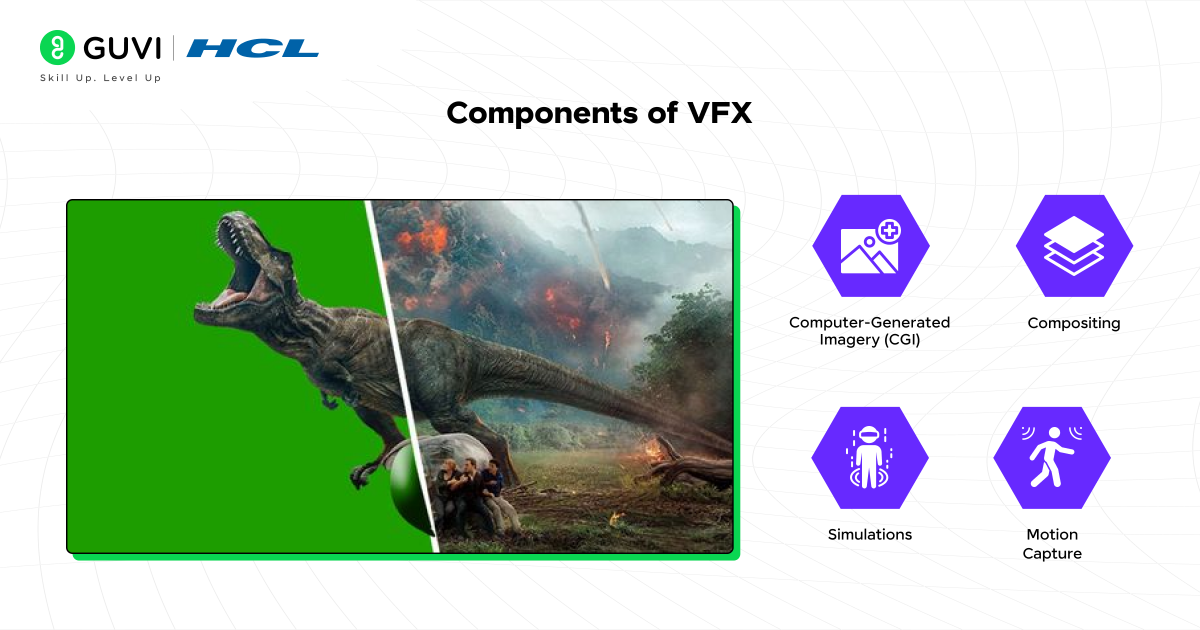
- Computer-Generated Imagery (CGI): Producing 3D objects, characters, and environments.
- Compositing: Merging multiple elements like CGI, live-action, and matte paintings seamlessly.
- Simulations: Crafting realistic water, fire, smoke, and destruction effects.
- Motion Capture: Translating actors’ physical movements into digital models.
All the Visual Effects Careers
The field of Visual Effects (VFX) offers a wide range of career opportunities across industries such as film, gaming, advertising, and virtual/augmented reality (VR/AR). Each role combines artistic creativity with technical skills to deliver stunning visual experiences. Below is a detailed breakdown of job opportunities, roles, and their corresponding salary ranges in India.
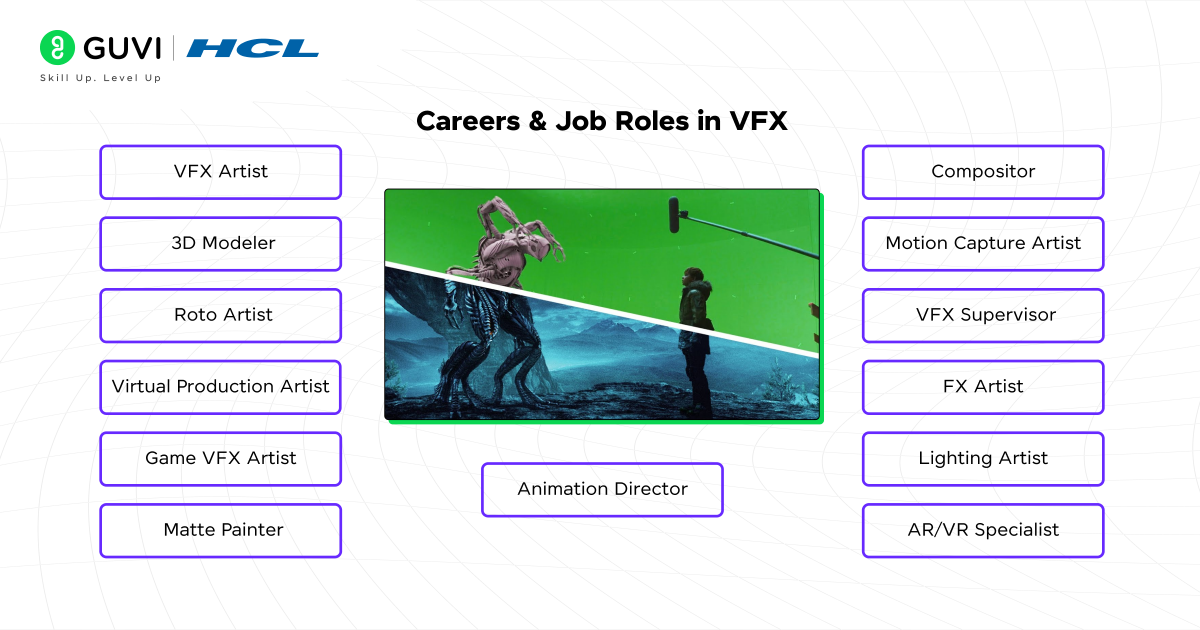
1. VFX Artist
Type of Career: Creative Design
Description:
VFX Artists are the masterminds behind breathtaking sequences that blur the line between reality and imagination. Their work includes creating explosions, simulating natural disasters, and designing fantasy worlds, all while integrating these effects seamlessly with live-action footage.
Key Responsibilities:
- Conceptualizing Effects: Collaborate with directors and creative teams to understand the visual requirements of a scene and brainstorm innovative solutions.
- Simulation and Design: Use physics-based simulations to design effects like water dynamics, fire, and destruction.
- Refinement and Integration: Ensure the effects align seamlessly with live-action elements through precise rendering, shading, and compositing.
Tools: Houdini (for procedural effects), Maya (3D animations), Nuke (compositing), After Effects (post-processing).
Career Opportunities: VFX Artists often specialize further in roles like FX Supervisors or Technical Directors as they gain expertise.
Salary Range (India): ₹3,00,000 – ₹12,00,000
2. Compositor
Type of Career: Post-Production
Description:
Compositors play a critical role in merging multiple visual layers into a single coherent shot. They work towards creating seamless, photorealistic imagery by blending live footage with CGI, matte paintings, and effects.
Key Responsibilities:
- Rotoscoping and Masking: Isolate objects or characters for selective manipulation.
- Color Correction: Adjust lighting, shadows, and colors to ensure visual continuity.
- Blending Layers: Combine visual elements like CGI, green-screen footage, and practical effects into a polished final shot.
Tools: Nuke (node-based compositing), SilhouetteFX (roto tools), Adobe After Effects.
Career Opportunities: Growth paths include Lead Compositor and VFX Supervisor.
Salary Range (India): ₹3,50,000 – ₹10,00,000
3. 3D Modeler
Type of Career: 3D Art & Animation
Description:
A 3D Modeler specializes in crafting detailed digital representations of characters, objects, and environments. Their models form the foundation for animation and visual effects.
Key Responsibilities:
- Asset Creation: Design characters, props, and environments using geometric modeling techniques.
- Texturing and Detailing: Add high-resolution textures, UV maps, and fine details like wrinkles or surface imperfections.
- Collaboration: Work with animators and riggers to ensure the models are functional and aesthetically aligned.
Tools: Blender (open-source modeling), ZBrush (sculpting), Maya, Cinema 4D.
Career Opportunities: 3D Modelers can advance to roles such as Character Artists or Environment Leads.
Salary Range (India): ₹2,50,000 – ₹8,00,000
4. FX Artist
Type of Career: Simulation & Dynamics
Description:
FX Artists create visually stunning simulations like explosions, dynamic particles, or natural elements such as smoke and water. Their work adds realism and drama to CGI-heavy projects.
Key Responsibilities:
- Simulation Design: Use advanced algorithms to create fluid simulations, fire dynamics, and destruction sequences.
- Optimization: Ensure effects run smoothly in both pre-rendered and real-time environments.
- Integration: Collaborate closely with lighting and compositing teams to enhance visual cohesion.
Tools: Houdini, Blender, Maya, RealFlow.
Career Opportunities: Growth potential includes FX Supervisor and Technical Director roles.
Salary Range (India): ₹4,00,000 – ₹15,00,000
5. Lighting Artist
Type of Career: Visual Realism
Description:
Lighting Artists are responsible for the mood and depth of CGI scenes. By emulating realistic lighting setups, they enhance the believability and emotional impact of animations and VFX.
Key Responsibilities:
- Design Lighting Schemes: Set up virtual lighting rigs that match live-action references or achieve a stylized look.
- Enhance Depth and Mood: Utilize global illumination and shadow mapping to create immersive environments.
- Technical Adjustments: Optimize lighting for efficient rendering in 3D pipelines.
Tools: Arnold, Maya, Blender, V-Ray.
Career Opportunities: Senior roles include Lead Lighting Artist or Director of Photography in animated films.
Salary Range (India): ₹3,00,000 – ₹9,00,000
6. Matte Painter
Type of Career: Digital Environment Design
Description:
Matte Painters specialize in creating highly realistic or fantastical backdrops that are often impossible or impractical to film. Their work is pivotal in transporting viewers to otherworldly landscapes or enhancing existing environments.
Key Responsibilities:
- Designing Digital Environments: Create detailed digital landscapes using photorealistic techniques.
- Environment Integration: Blend matte paintings seamlessly with live-action or CGI footage.
- Scene Extension: Extend physical sets or add intricate details to existing visuals.
Tools: Adobe Photoshop (painting and layering), Nuke (compositing), Vue (environment design), Substance (texturing).
Career Opportunities: Matte Painters often transition into Environment Artists or Art Directors.
Salary Range (India): ₹3,50,000 – ₹9,50,000
7. Motion Capture Artist
Type of Career: Performance Integration
Description:
Motion Capture Artists capture live human performances and translate them into animations for digital characters in films, games, and VR applications.
Key Responsibilities:
- Data Capture: Operate motion-capture rigs to record human movement.
- Data Processing: Clean and process motion data for integration into digital models.
- Animation Refinement: Enhance raw motion data to match artistic or narrative goals.
Tools: MotionBuilder, Vicon, OptiTrack, Blender.
Career Opportunities: Motion Capture Specialists often move into roles like Animation Supervisors or Virtual Production Artists.
Salary Range (India): ₹4,50,000 – ₹10,00,000
8. Roto Artist
Type of Career: Image Segmentation
Description:
Roto Artists play a crucial role in isolating elements from live-action footage for manipulation or integration with CGI. This segmentation forms the backbone of compositing workflows.
Key Responsibilities:
- Mask Creation: Isolate objects or characters using precise rotoscoping techniques.
- Edge Refinement: Ensure clean boundaries for seamless compositing.
- Support Compositors: Provide high-quality matte outputs for integration into VFX pipelines.
Tools: Nuke (rotoscoping and compositing), SilhouetteFX, Mocha Pro.
Career Opportunities: With experience, Roto Artists can transition into Compositors or VFX Supervisors.
Salary Range (India): ₹2,50,000 – ₹6,00,000
9. VFX Supervisor
Type of Career: Leadership & Coordination
Description:
A VFX Supervisor oversees the entire visual effects pipeline, ensuring technical and creative objectives are met. They serve as the bridge between directors, production teams, and VFX artists.
Key Responsibilities:
- Project Oversight: Manage all VFX aspects of a project from pre-production to final delivery.
- Team Collaboration: Lead artists, set deadlines, and coordinate with other departments like cinematography.
- Quality Control: Ensure visual consistency and adherence to the creative vision.
Tools: ShotGrid (project management), Nuke (compositing), Maya, Houdini.
Career Opportunities: This is often the pinnacle role in VFX production, with opportunities in directing or executive positions.
Salary Range (India): ₹12,00,000 – ₹30,00,000+
10. Virtual Production Artist
Type of Career: Real-Time CGI & Live Action
Description:
Virtual Production Artists bridge real-world filming with CGI through cutting-edge technologies like LED walls and real-time rendering. Their expertise is pivotal for creating immersive sets.
Key Responsibilities:
- Environment Integration: Blend live-action filming with CGI in real-time.
- Real-Time Rendering: Operate game engines to generate CGI backdrops instantly.
- Collaboration: Work closely with directors and cinematographers during shoots.
Tools: Unreal Engine, Unity, Maya, Blender.
Career Opportunities: Virtual Production Artists can evolve into Technical Directors or Production Supervisors.
Salary Range (India): ₹5,00,000 – ₹20,00,000
11. Game VFX Artist
Type of Career: Gaming & Real-Time Effects
Description:
Game VFX Artists specialize in creating dynamic and interactive effects like explosions, water ripples, and magic spells for immersive gameplay experiences.
Key Responsibilities:
- Effect Design: Create optimized particle effects and shaders for real-time rendering.
- Performance Optimization: Balance visual quality with game engine performance.
- Artistic Collaboration: Work with game designers to align VFX with gameplay mechanics.
Tools: Unity, Unreal Engine, Houdini, Maya.
Career Opportunities: Game VFX Artists often transition into roles like Lead VFX Artists or Technical Artists.
Salary Range (India): ₹4,00,000 – ₹14,00,000
12. AR/VR Specialist
Type of Career: Immersive Media
Description:
AR/VR Specialists craft interactive and immersive experiences for industries ranging from gaming to education and healthcare.
Key Responsibilities:
- Environment Creation: Design 3D environments and effects for AR/VR platforms.
- Interaction Design: Develop intuitive interfaces and user experiences.
- Cross-Industry Collaboration: Work on projects spanning gaming, e-commerce, and training simulations.
Tools: Unity, Unreal Engine, Blender.
Career Opportunities: Specialists can advance into AR/VR Directors or Creative Technologists.
Salary Range (India): ₹5,00,000 – ₹15,00,000
13. Animation Director
Type of Career: Creative & Team Management
Description:
An Animation Director oversees the artistic and technical direction of animated projects, ensuring every element aligns with the narrative and aesthetic goals.
Key Responsibilities:
- Team Leadership: Guide animators, storyboard artists, and technical teams.
- Creative Oversight: Ensure animation styles fit the project’s tone and vision.
- Workflow Management: Streamline production pipelines for efficiency.
Tools: Maya, Blender, Nuke, ShotGrid.
Career Opportunities: Animation Directors often move into Producer or Studio Head roles.
Salary Range (India): ₹10,00,000 – ₹25,00,000
Industries Employing VFX Professionals:
- Film and Television:
- Hollywood and Bollywood heavily depend on VFX for cinematic visuals.
- Popular studios: Double Negative, Framestore, MPC, Red Chillies VFX.
- Gaming:
- Real-time effects for video games, including AAA titles.
- Studios like Ubisoft, Rockstar Games, and EA Sports recruit VFX specialists.
- Advertising:
- High-end visual ads with motion graphics and CGI.
- Agencies like Ogilvy and Dentsu incorporate VFX in campaigns.
- VR/AR Development:
- Immersive environments for virtual reality applications.
- Companies like Unity Technologies and Oculus focus on AR/VR-based VFX.
- Freelance and Independent Projects:
- Independent artists contribute to indie films, gaming projects, or short films.
- Platforms like Upwork and Fiverr facilitate freelance opportunities.
Skills Required for a VFX Career
Achieving success in VFX requires a blend of technical expertise and artistic vision.
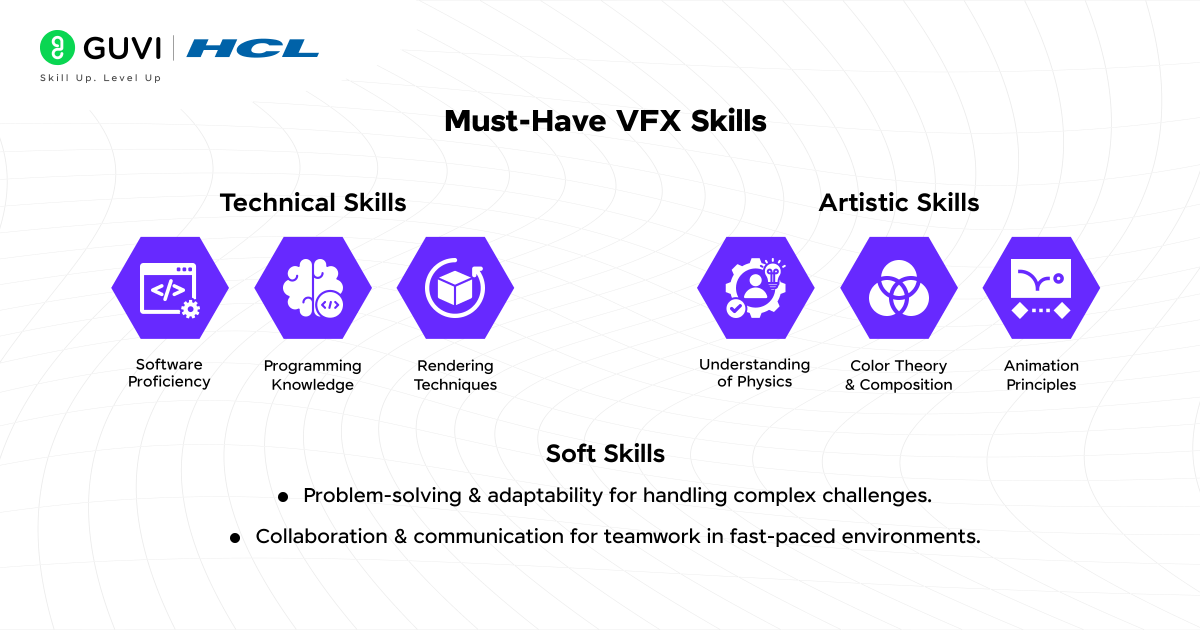
1. Technical Skills
- Software Proficiency: Mastery of industry-standard tools like Houdini for simulations, Maya for 3D modeling, and Nuke for compositing.
- Programming Knowledge: Understanding scripting languages like Python and MEL to automate tasks and create custom effects.
- Rendering Techniques: Knowledge of ray tracing, global illumination, and real-time rendering workflows.
2. Artistic Skills
- Understanding of Physics: Realistic effects rely on knowledge of physical behaviors like fluid dynamics and particle movement.
- Color Theory and Composition: Essential for creating visually appealing and cohesive shots.
- Animation Principles: Ensuring natural motion and timing in character and object animations.
3. Soft Skills
- Problem-solving and adaptability for handling complex challenges.
- Collaboration and communication for teamwork in fast-paced environments.
Wondering how you can master all these skills with guidance from top experts? Kickstart your career in VFX with GUVI’s VFX Course with Gen AI, designed to combine cutting-edge generative AI techniques with industry-standard VFX tools.
This course offers hands-on training with tools like Maya, Blender, Nuke, and AI-driven software, empowering you to create stunning visuals for film, gaming, and media. Learn from experts, gain real-world project experience, and unlock job opportunities in the ever-evolving VFX industry.
Emerging Trends in VFX
The VFX industry evolves rapidly, driven by technological advancements and changing audience expectations. Below are key trends shaping the future of VFX:
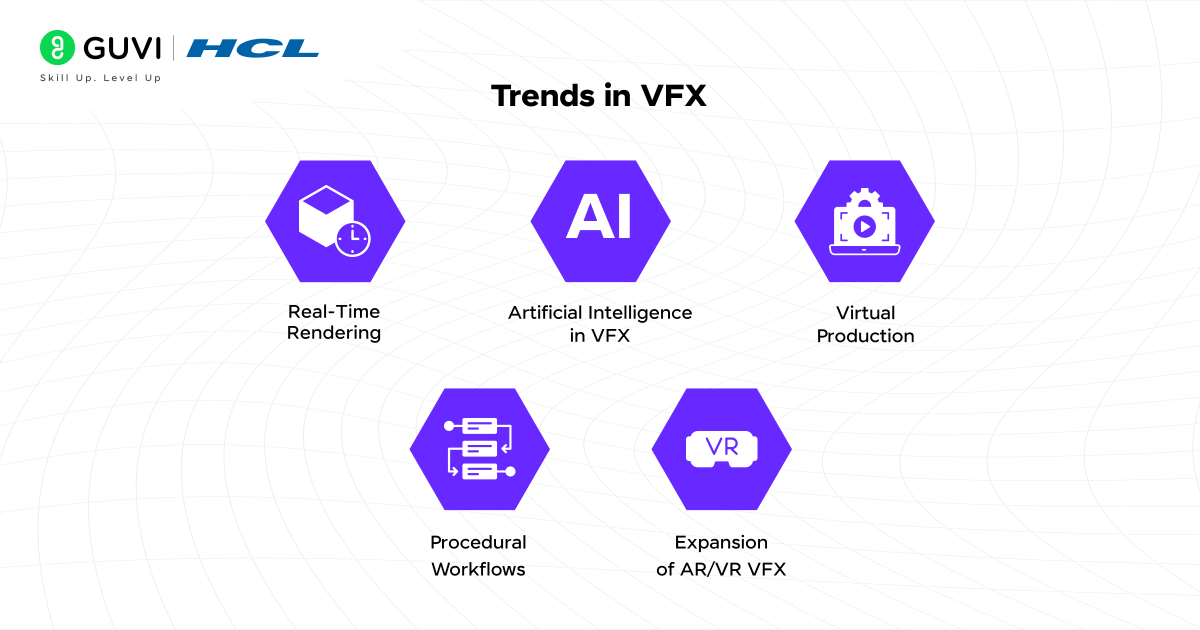
1. Real-Time Rendering
- Description: Real-time engines like Unreal Engine and Unity enable filmmakers to visualize scenes instantly during production.
- Impact:
- Reduces post-production time.
- Increases creative flexibility.
- Popular in virtual production for films like The Mandalorian.
- Applications:
- Previsualization (Previs) for movies.
- Interactive game development.
2. Artificial Intelligence in VFX
- Description: AI automates tedious processes like rotoscoping, cleanup, and facial motion capture.
- Impact:
- Speeds up production workflows.
- Enhances precision in character animations and scene retouching.
- Examples:
- Deep learning models for face replacement (e.g., deepfakes).
- Neural networks to upscale resolution in older footage.
3. Virtual Production
- Description: Merging physical sets with CGI environments using LED walls and virtual cameras.
- Impact:
- Creates immersive environments on-set.
- Allows real-time changes to scenes during shooting.
- Adoption: Increasingly used in major productions, blending live-action and CGI seamlessly.
4. Procedural Workflows
- Description: Generating assets and effects algorithmically rather than manually.
- Impact:
- Saves time in creating complex scenes.
- Ensures consistency across similar shots.
- Tools: Houdini, Blender Geometry Nodes.
5. Expansion of AR/VR VFX
- Description: Augmented and virtual reality applications in gaming, education, and simulation.
- Impact:
- Opens new markets for VFX professionals.
- Demands higher expertise in real-time effects.
- Use Cases:
- Virtual museum tours.
- Training simulations for industries like healthcare.
Takeaways…
The VFX industry offers a wealth of opportunities for creative and technical professionals. Whether in film, gaming, or emerging fields like AR/VR, the demand for skilled VFX artists continues to grow.
And I hope this article will help you make use of that increasing growth, garner the skills needed and aim for the VFX role you would like to build a career in. If you have any doubts, reach out to me in the comments section below.
FAQs
Yes, VFX is a good career for creative individuals passionate about visual storytelling. It offers opportunities in film, gaming, advertising, and television with a growing demand for skilled professionals.
Yes, VFX artists earn competitive salaries, especially with experience. Entry-level salaries are modest, but experienced artists in top studios or freelancing can earn significantly more.
The scope of a VFX career is vast, with roles in industries like film, gaming, advertising, virtual reality, and augmented reality. The growing reliance on digital visuals ensures steady demand.
Yes, VFX is in high demand due to the increasing use of digital effects in films, games, and virtual experiences globally.
Yes, CGI (Computer-Generated Imagery) is a subset of VFX and involves creating digital graphics, characters, and environments for movies, games, and other media.























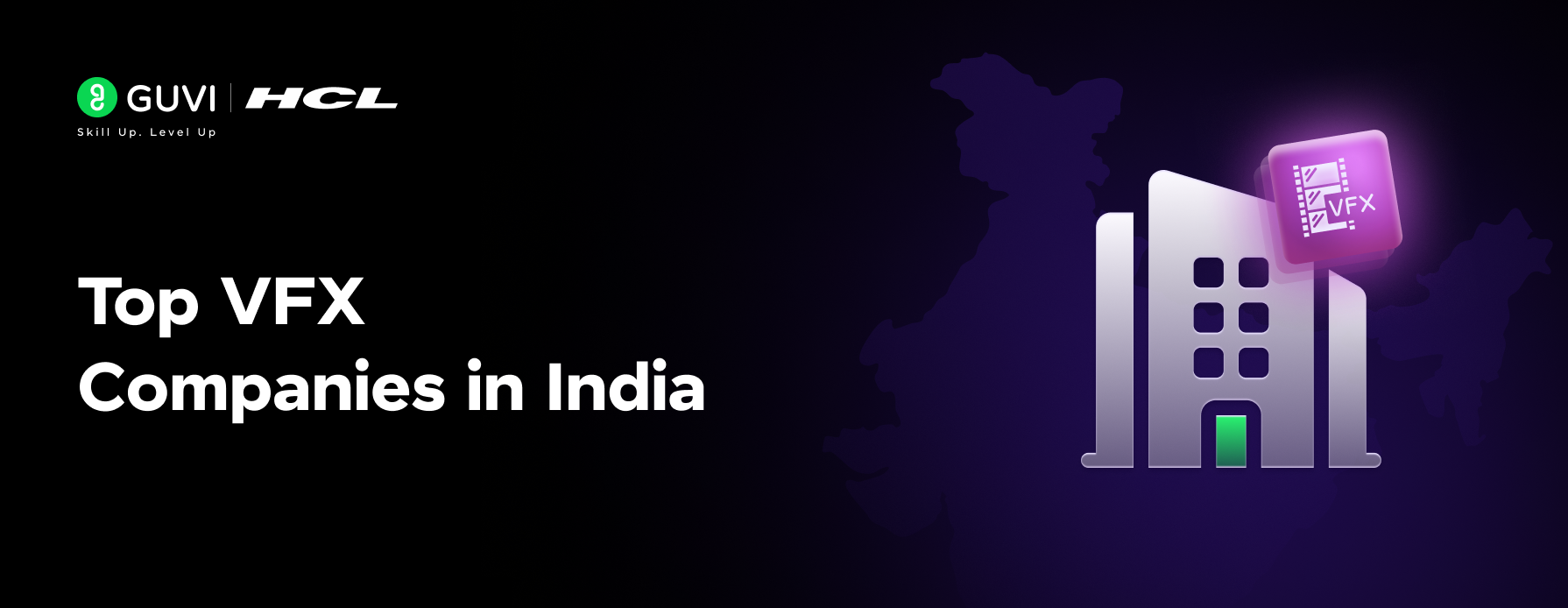
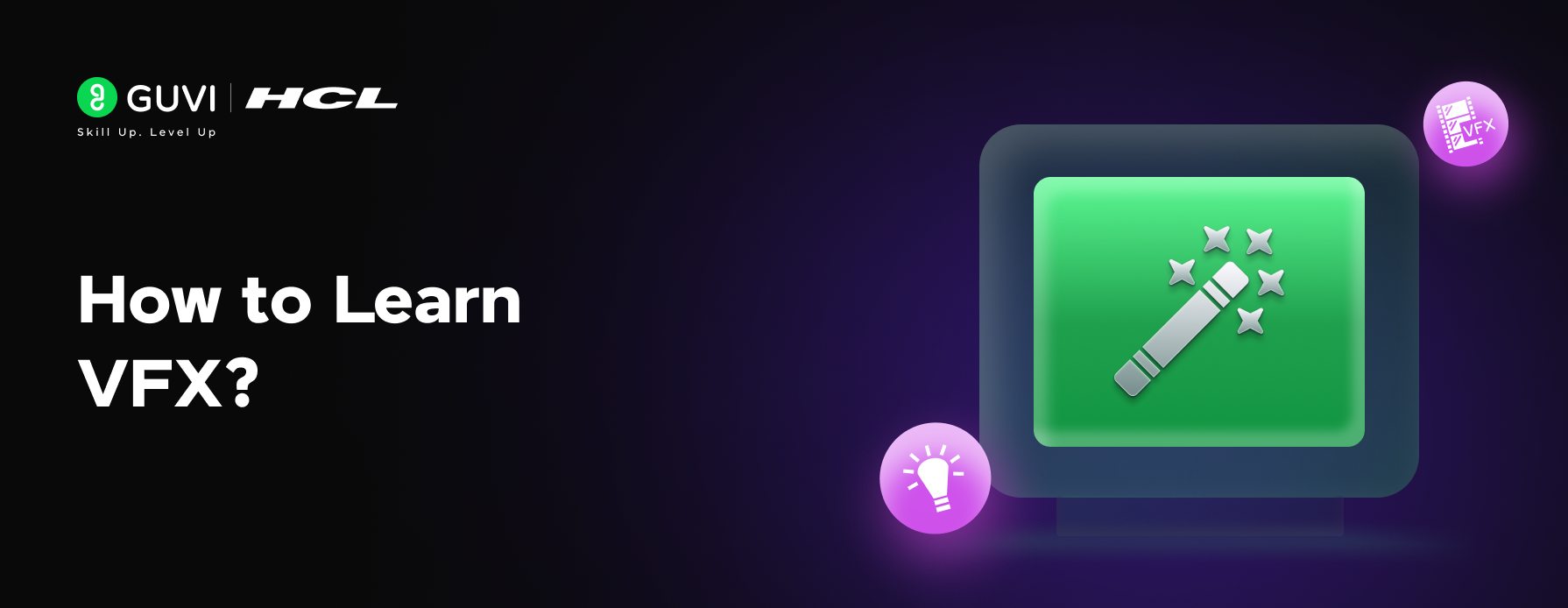

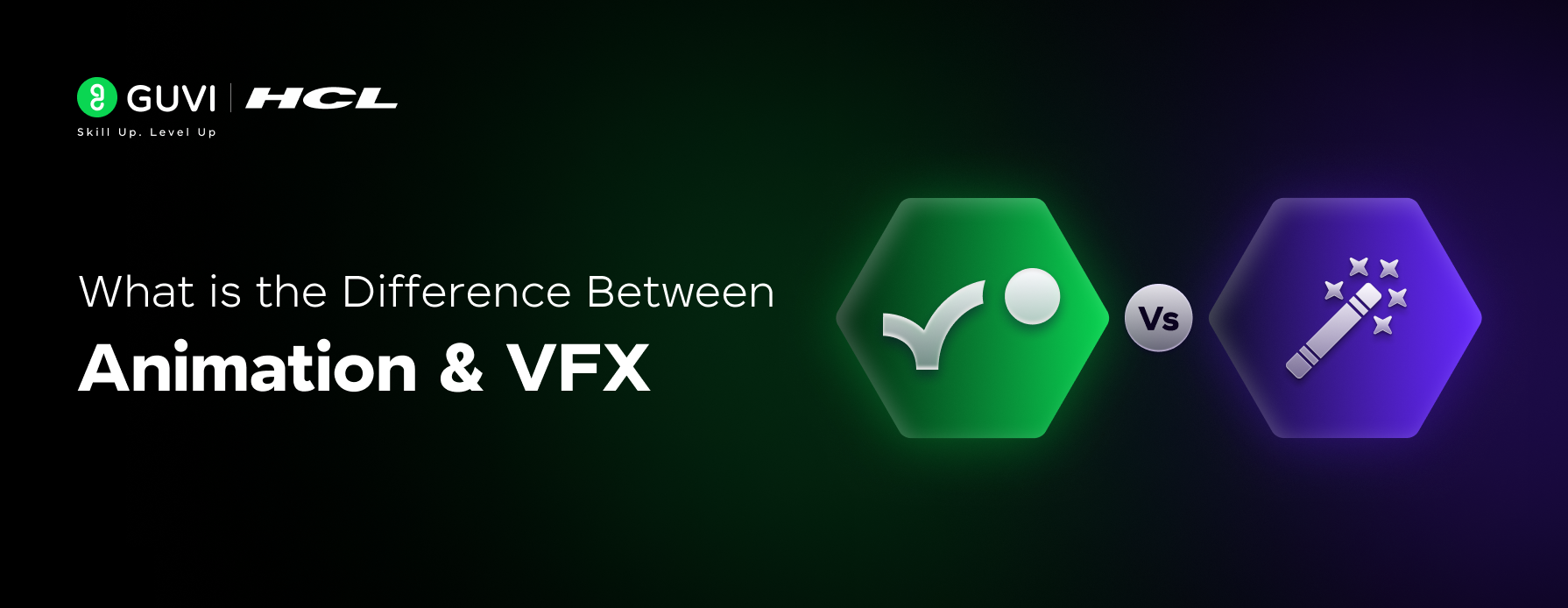
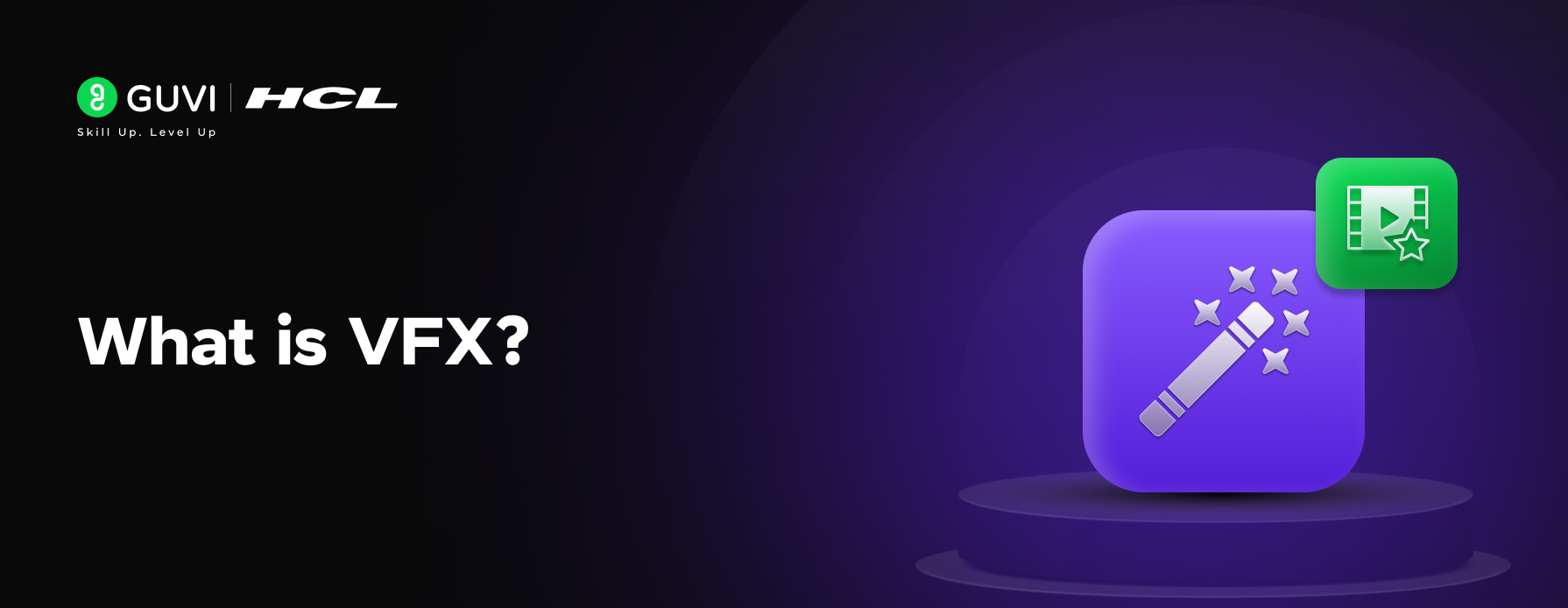
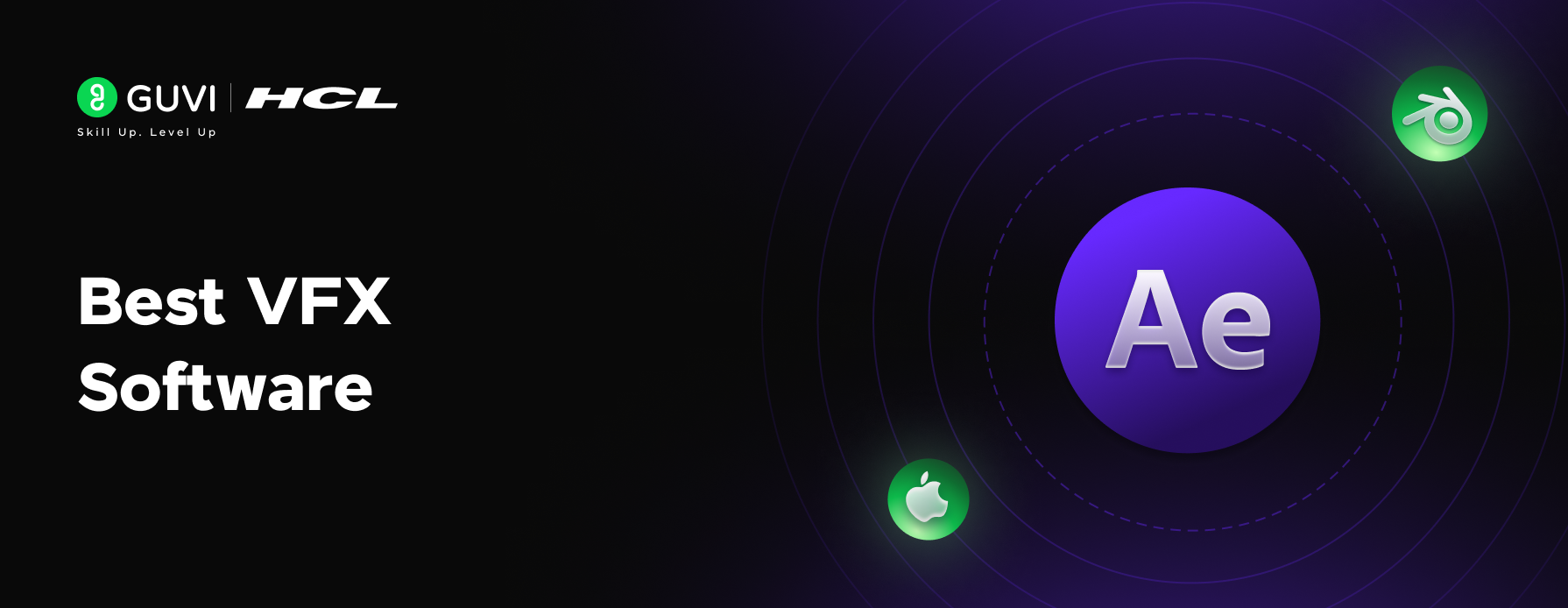
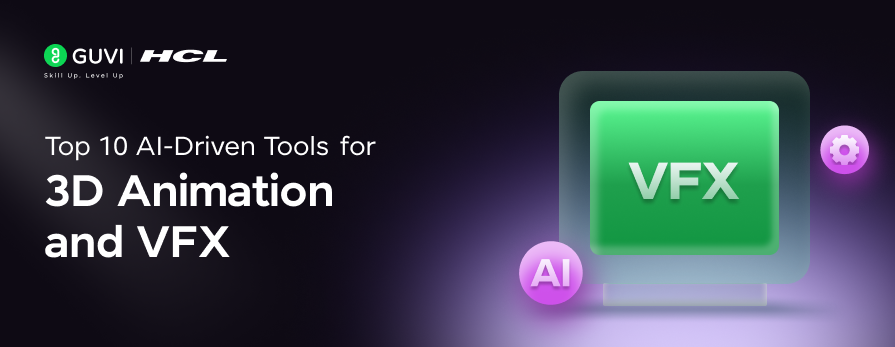

Did you enjoy this article?